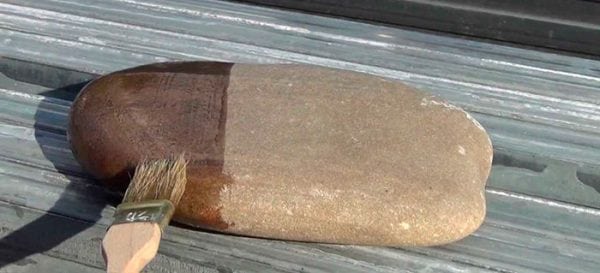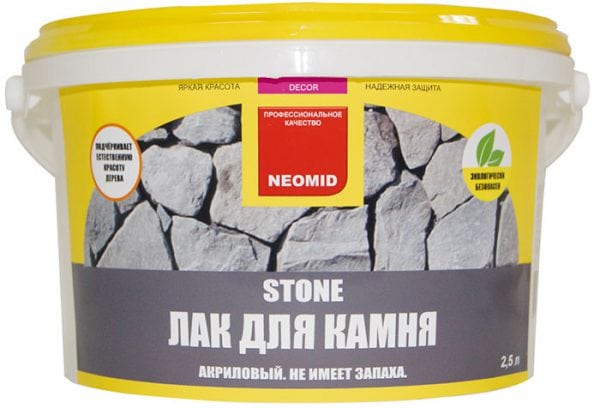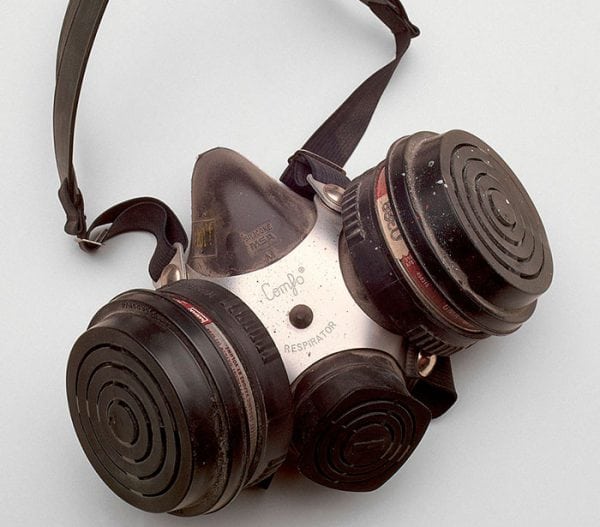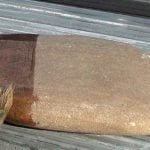Stone varnishing is used for two reasons. Firstly, in order to protect the mineral finishing materials from rapid destruction under the influence of external environments. Secondly, to create a special appearance of the coating. Varnish with a wet effect for stone is very popular today, both in the external and internal finishes.
Chemistry, which is used as a lacquer layer, must have good physical and technical characteristics, otherwise all works with decor will be worthless. Let us consider in more detail what kind of “wet stone” this varnish is?

How to choose a lacquer
The answer to this question depends on what type of stone coating should be processed and what are its operational features. So, for example, for paving slabs, bricks, and facade stones, you need a tool that "perfectly" passes the test of atmospheric phenomena. In addition to moisture resistance, the varnish must withstand the effects of temperatures, ultraviolet radiation, wind, the intensity of mechanical stress. This means that the protective substance must be as reliable as possible in order to maintain the strength and indestructibility of mineral materials for longer.
Surfaces made of stone, tile, ceramics indoors are less affected by atmospheric conditions. At the same time, the microclimate in the rooms and the intensity of their use can also affect the material.
Varnishes “wet stone” create a strong transparent protective film on the surface of the material, which emphasizes the texture and color saturation of the processed surface. Also present light silky effect.
For work on stone surfaces, an acrylic composition is ideal. By type of base it is aqueous or solvent based. Water-based acrylic is quietly applicable for indoor use, since it is known that water - means non-toxic. Acrylic solvent-based mixture has the best performance. This is achieved through the chemical reagents that make up the composition. But because of this, the toxicity of the substance increases. When working with solvent-based acrylic varnish, personal protective equipment must be used.

Material properties
Organically and waterborne acrylic varnishes, in general, have similar properties:
- an opportunity to apply for external and internal works;
- significant strengthening of the surface and structure of brick, paving slabs, concrete, natural and artificial stone, other coatings based on mineral materials;
- weather protection;
- hydrophobization of the surface and protection against moisture ingress;
- decorative appeal: color saturation, luster;
- high degree of adhesion, deep permeability;
- insensitivity to the effects of biological, chemical environments;
- insensitive to UV, temperature extremes;
- resistance to mechanical stress, low susceptibility to abrasion;
- extension of the operational life of brick, tile, decorative stone structures.
Mode of application
Varnish is already sold in a ready-to-use liquid substance. Stir thoroughly before use. If the substance is too viscous, dilution is allowed no more than 10% of the total volume of the substance. White spirit is usually used as a diluent.
To apply the substance to the surface of the tile using a paint brush, roller or swab. If the surface of the brick, paving slabs is smooth, then one protective layer to create a "wet stone" will be enough. When processing coatings with a porous structure, it is recommended to apply 2-3 layers. The interval between application of the layers is 6-8 hours.
Even if water-based varnish, it is still better to work in a respiratory mask. There should be no open flame near the work area, as the material is easily flammable. Obligatory good ventilation of the premises (if working inside) during and after varnishing.

The surface where the varnish will be applied must be previously cleaned of dirt, grease stains, dust, efflorescence, mold; dried well. If it is supposed to varnish paving slabs, it is worth making sure that the cloth is not washed from below. The structure should not have fragile sections.
to contents ↑Assessment of experts and consumers
To assess the quality and reliability of the material, let's see what reviews the varnish for stone surfaces with a wet effect received. Note that the reviews are mostly positive, although there are exceptions.
For example, you can find that the substance is too thick and diluted with water according to the instructions:
- no more than 10% of the volume. But after painting the facade of the house, whitish smudges and air bubbles are found on the surface. Experts in such cases advise the following:
- a failed attempt to clean off with a solvent;
- henceforth, do not dilute the acrylic mixture, but use the finished one;
- after stirring, let stand for 5-10 minutes so that the air bubbles "settle";
- paint brick by brick;
- to pay attention to the compatibility of the compositions of preparations for cleaning stone surfaces and varnish;
- observe the temperature regime of operation (not lower than +10 degrees, not higher than +20 degrees).
After fixing the errors, the work will go smoothly.
To increase strength, stability, extend the durability of structures made of mineral materials, and even give surfaces a decorative appeal easily. It is enough to use high-quality protective varnish, and do it right. Decorative varnish coating will not only protect stone surfaces from external influences for a long time and reliably, but it will also always please the eye. Thanks to the wet effect, a sensation of purity and brilliance arises, like from a fresh rain.





